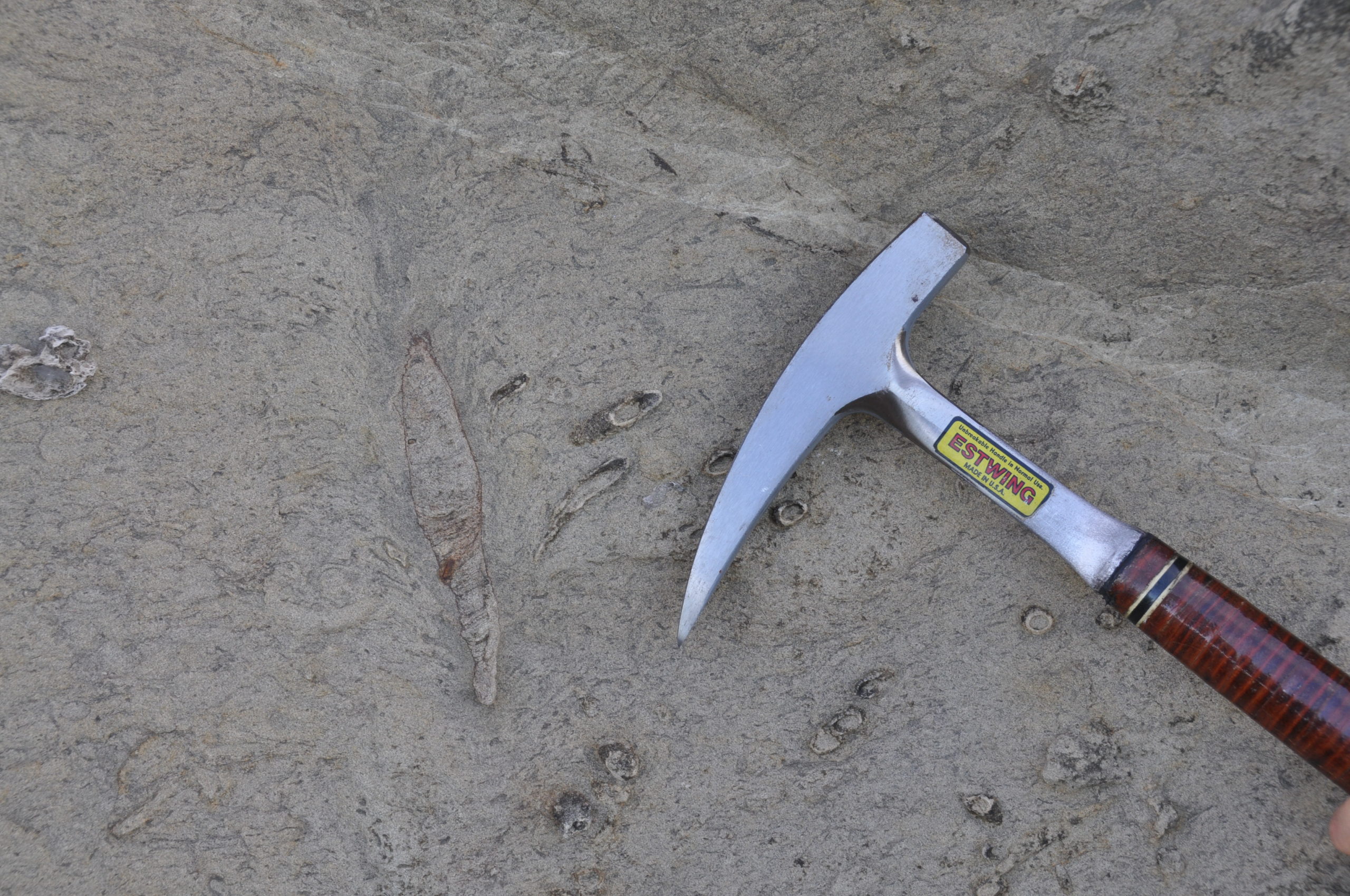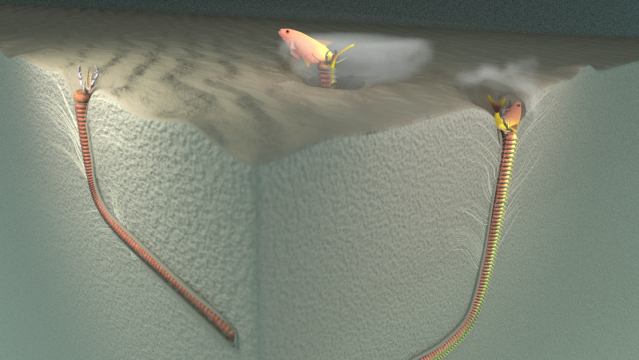Twenty million years ago, the shores of northern Taiwan were sandstone sediments at the bottom of the sea, where 6-foot-long worms lurked in their burrows, waiting for unsuspecting prey to pass overheard. Now, a team of geoscientists have chronicled 319 trace fossils of those carnivorous marine worms, whose dens fossilized in the Miocene muck.
“In the beginning, we were firmly convinced it was a very fancy shrimp burrow,” Ludvig Löwemark, a sedimentologist at National Taiwan University, said in a video call. “And then, after talking to some other experts, we were leaning towards this bivalve hypothesis. But in the end, we became more and more convinced that it’s actually a bobbit worm that made this trace.”
Trace fossils are vestiges of the creatures who made them — footprints and other hardened remnants of the animals’ movements in life, rather than the fossil remains of the critters themselves. The worms the researchers suggest once inhabited these burrows are long gone, presumably being composed of soft tissues that deteriorated shortly after death. An analysis of the fossils is published today in the journal Scientific Reports.
Löwemark’s team, led by Yu-Yen Pan at the National Taiwan University, discovered hundreds of pockmarks peppering Taiwan’s rocky shoreline. They found the holes veered horizontally as they went deeper, forming a boomerang-shaped burrow about 2.5cm wide and 1.83 m deep. The tapering bend of the burrow suggested to the team that the earth beneath the creature either became harder to dig through at a certain depth or became more anoxic. (Worms breathe through their skin, so if the soil they’re immersed in doesn’t have enough oxygen, it can be deadly).

Where the burrows opened onto the then-seafloor, there was a “feathering” pattern the team identified, which suggested that the silty sea bottom had collapsed around the structure in a funnel shape, indicative of a vacuum left by a creature yanking itself back into its lair. They concluded the animals that made the burrows are close relatives of today’s killer bobbit worms, which still grow up to 3 metres long and were named for an infamous 1990s criminal case involving a cut-off penis (though it might be time to change that name). The trace fossils in Taiwan are called Pennichnus formosae, meaning “beautiful feather trace,” the latter name deriving from the Portuguese name for Taiwan, Formosa.
“It really doesn’t matter who made it — it’s the shape and the function of the trace fossil that gets a name,” Löwemark said. “So you have a genus for similar traits, fossils that were produced in a specific way, due to feeding behaviour or locomotion or whatever… and then you have a species name.”
Having eliminated other culprits — the shrimp would have left “turn-around” offshoot chambers in their dens, while the worms are more of a one-way operation, and a bivalve suspect would have had a cul-de-sac at the end of the burrow marking where it made space for its shell — a predatory ambush worm seemed to fit the profile. Today, the bobbit worm hunts by feel: When it senses a disturbance outside its lair, the worm lunges at the yet-unidentified organism lightning fast, armed with hardened pincers. When it has a good hold, the worm yanks the prey into its burrow, and the sand collapses over the entrance, concealing the grisly scene. If you blinked, you’d never know it happened.
“It’s a very brutal procedure,” Löwemark explained.
When you think of it at scale — the team found hundreds of these burrows in two sites along the coast — it sounds like a terrifying, reverse game of whack-a-mole.
